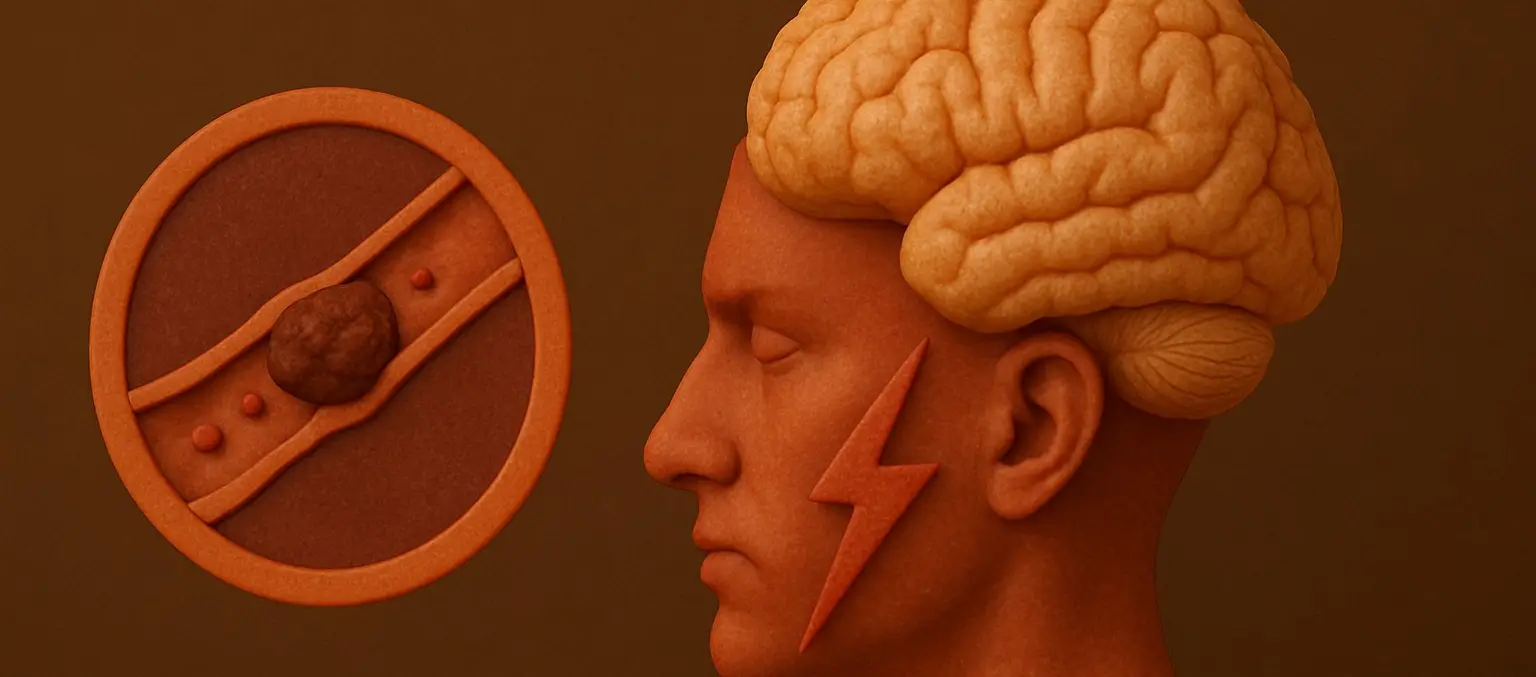- A stroke, also known as a cerebrovascular accident (CVA), occurs when the blood supply to part of the brain is interrupted or reduced, depriving brain tissue of oxygen and nutrients.
- Brain cells begin to die within minutes, making it a medical emergency.
Types of Strokes
-
Ischemic Stroke:
- Caused by a blockage in an artery supplying blood to the brain.
- Thrombotic Stroke: Blood clot forms in an artery supplying the brain.
- Embolic Stroke: Blood clot or debris forms elsewhere in the body and travels to the brain.
- Caused by a blockage in an artery supplying blood to the brain.
-
Hemorrhagic Stroke:
- Caused by bleeding in the brain.
- Intracerebral Hemorrhage: Bleeding within the brain tissue.
- Subarachnoid Hemorrhage: Bleeding in the space between the brain and the surrounding membrane.
- Caused by bleeding in the brain.
-
Transient Ischemic Attack (TIA):
- Often called a mini stroke, it’s a temporary period of symptoms similar to those of a stroke.
This is a sample ad placement!
Causes
- Ischemic Stroke: Atherosclerosis, heart disease, atrial fibrillation, high blood pressure, high cholesterol.
- Hemorrhagic Stroke: Hypertension, aneurysms, arteriovenous malformations (AVMs), head injury, blood-thinning medications.
Symptoms
- Sudden numbness or weakness of the face, arm, or leg, especially on one side of the body.
- Sudden confusion, difficulty speaking, or trouble understanding speech.
- Sudden difficulty seeing in one or both eyes.
- Sudden difficulty walking, dizziness, loss of balance or coordination.
- Sudden severe headache with no known cause.
This is a sample ad placement!
Diagnosis
- Physical Examination: Neurological examination to assess symptoms.
- Imaging Tests:
- CT Scan: Quickly identifies bleeding in the brain.
- MRI: Provides detailed images of brain tissue and blood vessels.
- Carotid Ultrasound: Shows narrowing or blockage in the carotid arteries.
- Blood Tests: To determine clotting factors, blood sugar, and other relevant parameters.
- Cerebral Angiography: Visualizes the brain’s blood vessels.
Pathophysiology of Stroke
- Ischemic: Blockage of a blood vessel supplying the brain, usually due to a blood clot, leading to tissue ischemia and infarction.
- Hemorrhagic: Rupture of a blood vessel causing bleeding in or around the brain, leading to increased intracranial pressure and tissue damage.
- Neuronal Injury: Lack of oxygen and nutrients results in neuronal death and brain damage.
This is a sample ad placement!
Treatment
-
Ischemic Stroke:
- Clot-Busting Medications: Intravenous tissue plasminogen activator (tPA) within a few hours of symptom onset.
- Endovascular Procedures: Mechanical thrombectomy to remove the clot.
- Antiplatelet Agents: Aspirin or clopidogrel to prevent further clots.
- Anticoagulants: For patients with atrial fibrillation or other risk factors.
-
Hemorrhagic Stroke:
- Emergency Measures: Controlling bleeding, reducing intracranial pressure.
- Surgical Interventions: Repairing blood vessel anomalies or removing the blood clot.
- Medications: To control blood pressure, prevent seizures, and manage symptoms.
-
Rehabilitation:
- Physical Therapy: To improve motor skills and mobility.
- Occupational Therapy: To regain skills for daily activities.
- Speech Therapy: To improve communication and swallowing.
- Supportive Care: Psychological support and counseling for patients and families.
Thank you for reading from Firsthope's notes, don't forget to check YouTube videos!

